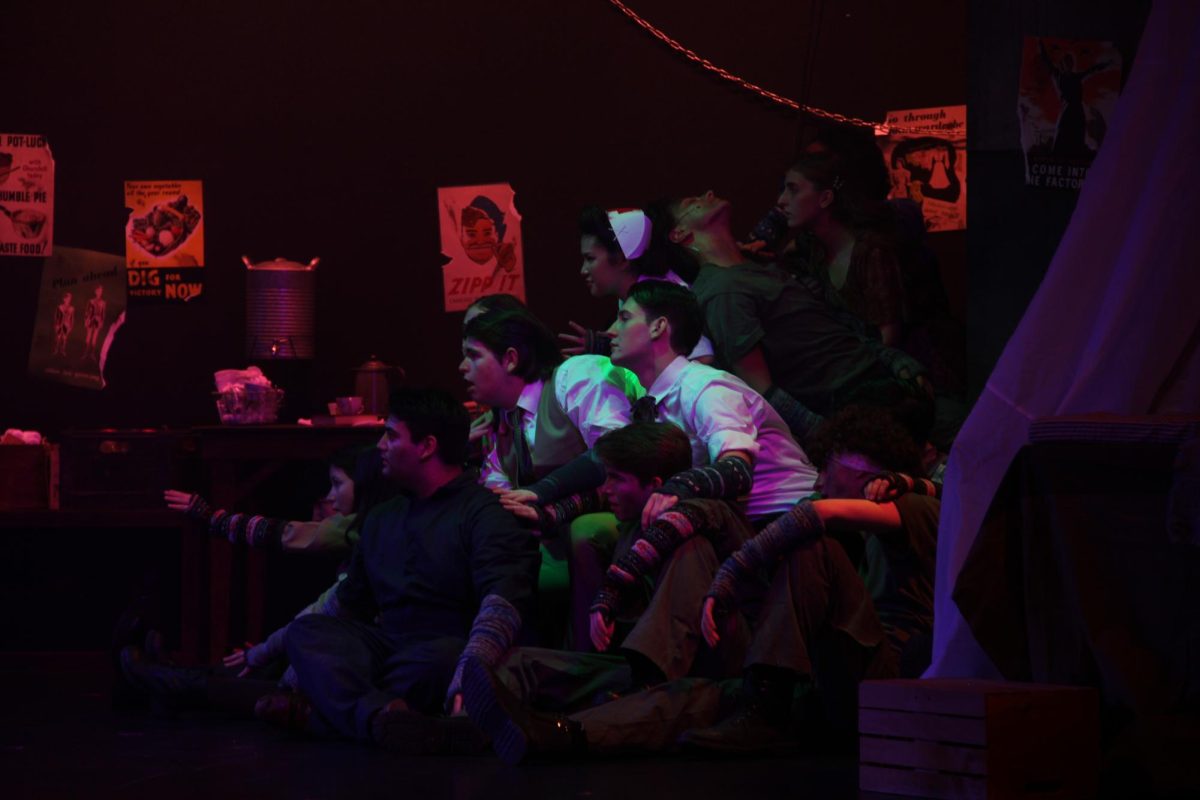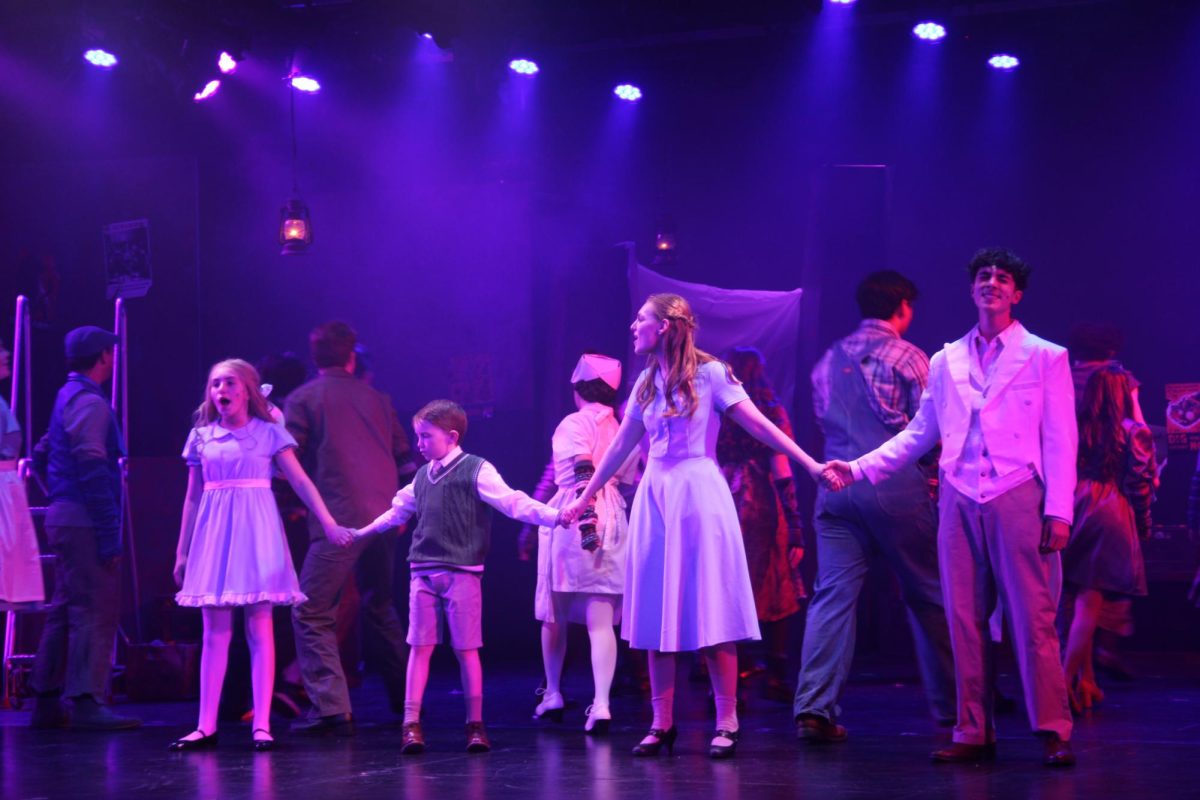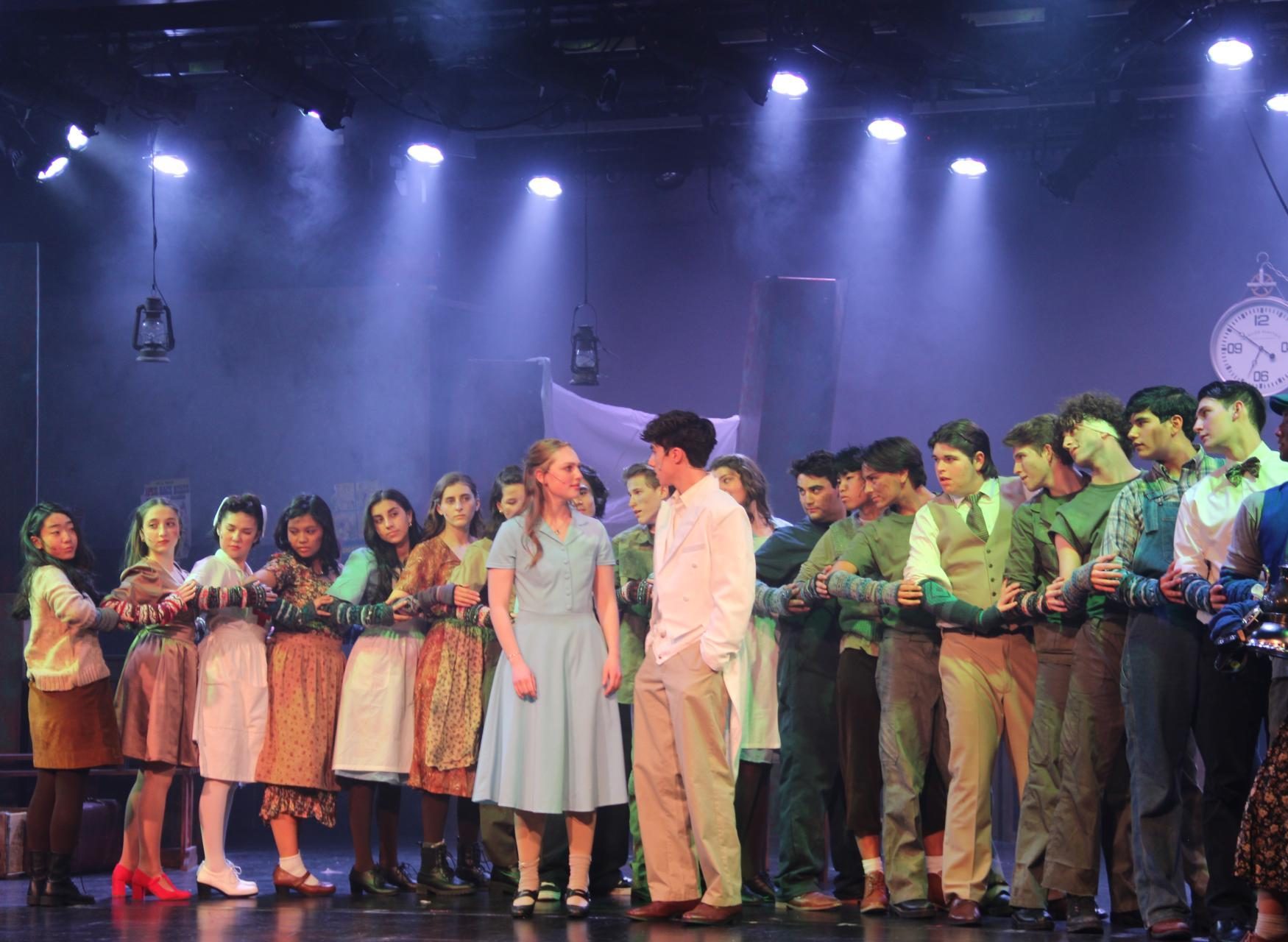This past March, students and faculty in the performing arts department combined efforts to put together the Spring play, Alice by Heart. Involving close to 90 students and countless different components coming together, the touching musical brought the audience down the rabbit hole and into a unique wonderland of its own.
Work on the set of the play began in January, with approximately 30 students on Build Crew meeting two times a week for two months to design the scenic aspects of the show. Mr. Justin Karr, the technical director, oversaw the scenic design in order for the set to function as needed in the play. He explains that “this play had a specific request for a swing and … we put the swings so that it could be there and then go away.” During the actual building process, the crew worked to balance the time frame they had to produce the set with space constraints due to other events occurring on the theater stage.

In addition to the set, the lighting design was another important technical element in portraying the story. Mr. Karr’s role in coordinating the lights involved several conversations about logistics, such as determining the instruments that would be needed and how to utilize them. Lighting Designer senior Oliver Wu also worked on the lights, using them to “create an atmosphere that helps build and further the plot and story,” and use “immersion, colors, patterns, and dimension to create a world that the audience can get lost in.” He first started planning for this show back in October of last year, and he spent time during rehearsals designing the lights from January until opening night.
Oliver says that one of his greatest challenges during this process was finding the balance between using the lights to tell the story and not distracting the audience away from the actors, as “it is a fine line between adding to the scene and pulling focus.” For example, during the Tea Party scene where the Mad Hatter brings together Wonderland and the horrors of WWII with his riddle, Oliver aimed to reflect the merging of these two opposite worlds in the lights. While the first iteration of the lights was “a bit too much, being too bright and cluttered and ultimately confusing the audience,” he took several more tries and ultimately created “a look that is subtle and more unconscious, adding an eerie tone to the scene while not pulling the audience out of the story.”
Overall, the spring play Alice By Heart exemplified, as Mr. Karr states, how “the medium of theater is truly a creative collaboration… And no matter what show you’re doing, it takes many people, the actors, the crew, the designers, the director, the playwright… it takes all these different people just to bring something to fruition.” From scenic design to lighting, each component was integral to the play’s success, allowing the audience to embark with Alice on her journey through loss and finding the courage to keep going.


